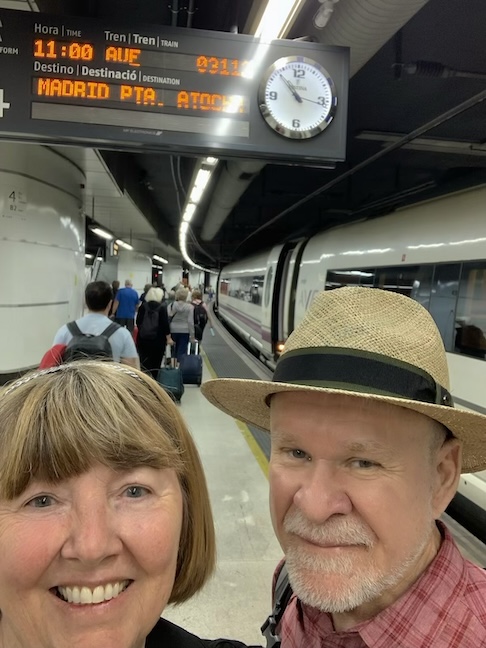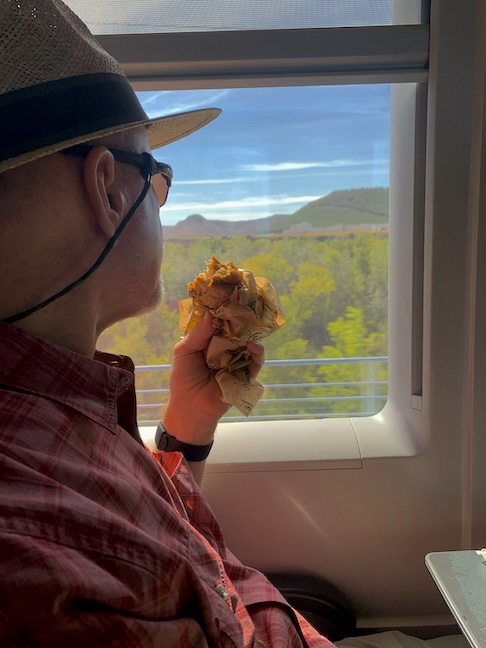
The Spanish high-speed AVE trains zips across the 386 miles of arid plains and hillsides from Barcelona’s perch between the Mediterranean Sea and the Pyrenees to Madrid on a plateau in the heart of Spain. A monitor showing our progress clocked speeds up to 193 mph during our 2hr30min trip. The sand and clay soil is perfect for the 6.8 million acres of olive trees that dot the rolling terrain in neatly aligned rows.
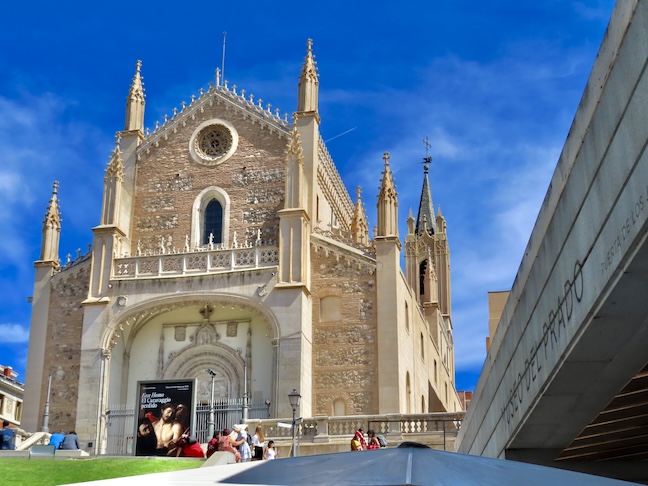
We arrived in Madrid at 2 PM and toured the Prado Museum, considered one of Europe’s finest art museums and boasts one of the world’s largest art collections. Our local guide whisked us into a side door and took us on a whirlwind journey through art history, spotlighting Las Meninas by Valásquez and hidden treasures by El Greco, Titian, and Goya. Picture-taking is not allowed in the Prado. The church next door in the above picture is Saint Jerome the Royal, built in 1503.
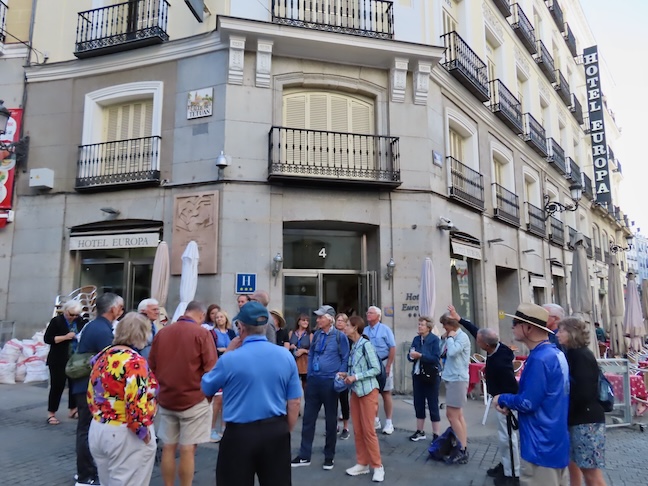
Our group checked into the Hotel Europa at 5:30 pm and then met out front at 7:30 pm for a stroll through Madrid’s bustling streets and dinner together.

Dinner at Prada A Tope was family style, with Prada-made unlimited wine, all paid for by Rick Steves. Dinner was potato quiche with red sauce, meat, and cheese tray; giant mushrooms smashed flat and pan-seared, León’s famous beef cooked “al punto” served with sweet and sour Persian figs and finished up with amazing Spanish chocolate truffles.
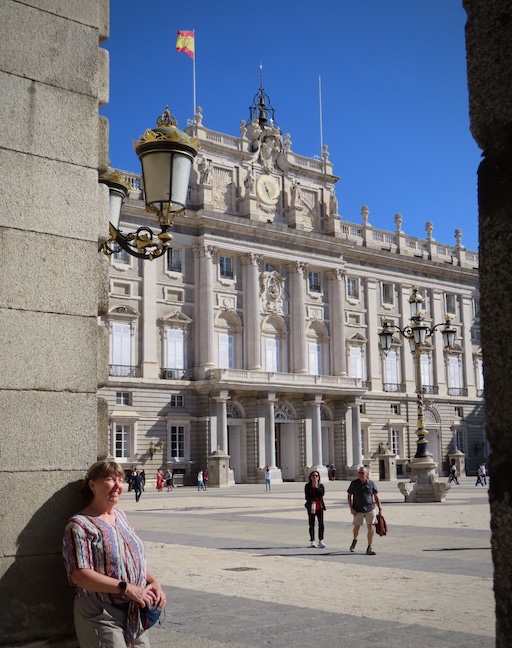
The Royal Palace of Madrid is the Spanish royal family’s official residence, but they do not live there. With 3,500 rooms and more than a million square feet of space, it’s the largest palace in Europe and nearly double the size of Buckingham Palace. It is owned by the Spanish state and used for official state functions. The King’s flag is flown when the royals are there for balls, peace talks, and such, and no uninvited guests may enter.
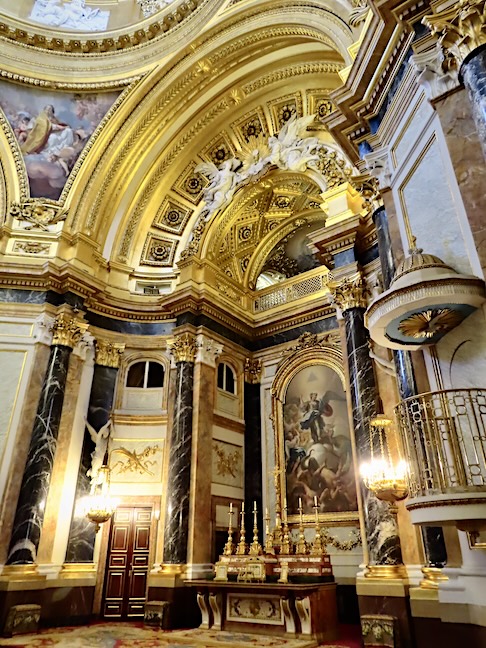
Fire destroyed the original 9th-century Islamic fortress on this site. Felipe V rebuilt the palace in 1734. Every square inch of the palace’s exquisite interior is over-the-top lavish.
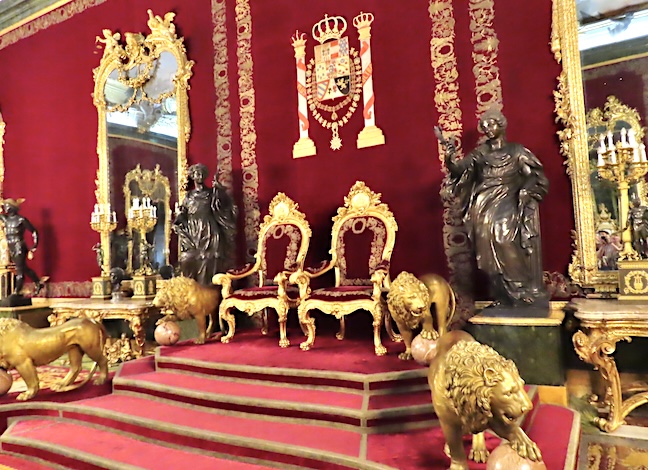
The throne room is royal red with enough gold to sink a ship and lots of lions, the official symbol of the realm.

The Gala Dining Room’s walls are adorned with Giovanni Tiepolo’s frescoes. The dining table is 98 feet long, weighs several tons, and can seat over 150. Here, it’s set with a section removed for half its capacity.
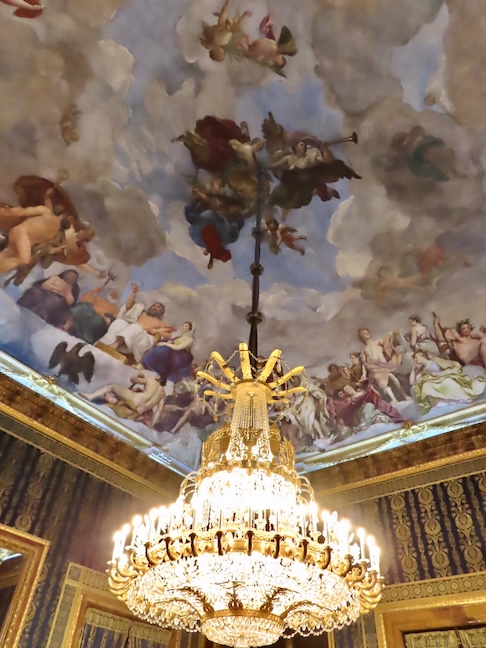
The palace’s elaborate chandeliers were originally lit by as many as 1,000 candles. The fixtures were lowered by ropes and pulleys to light, extinguish, and replace candles. The soot on the ceilings was hellish.
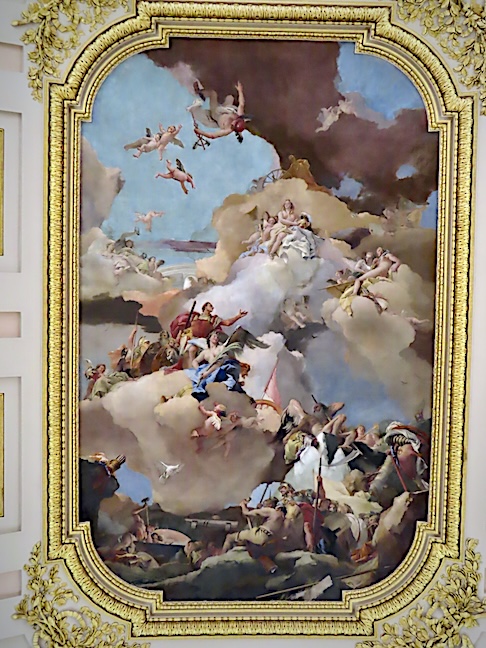
The palace ceilings bear frescoes by Giovanni Tiepolo and Corrado Giaquinto. Most adhere to the ascending formula of people at the bottom in hell looking up to people on earth looking up to Mary, Joseph, and baby Jesus, peering into heaven filled with cherubs, saints, and deities.
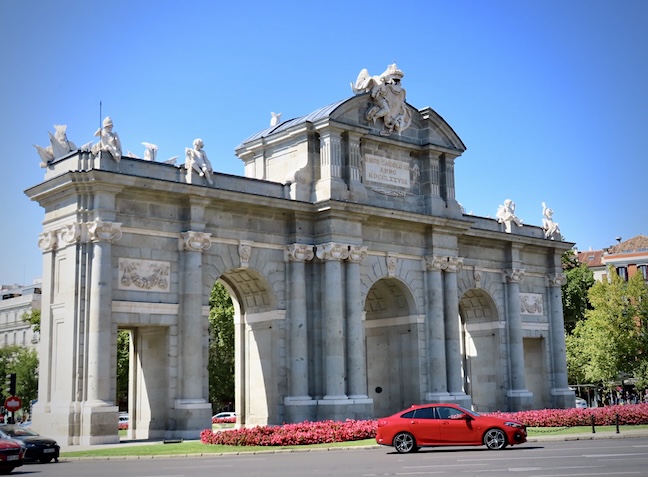
After the lux sensory overload in the Royal Palace, we were set free to wander around the hectic city on our own. Built between 1769 and 1778 by King Carlos III, the Puerta de Alcalá celebrated the monarch’s arrival.
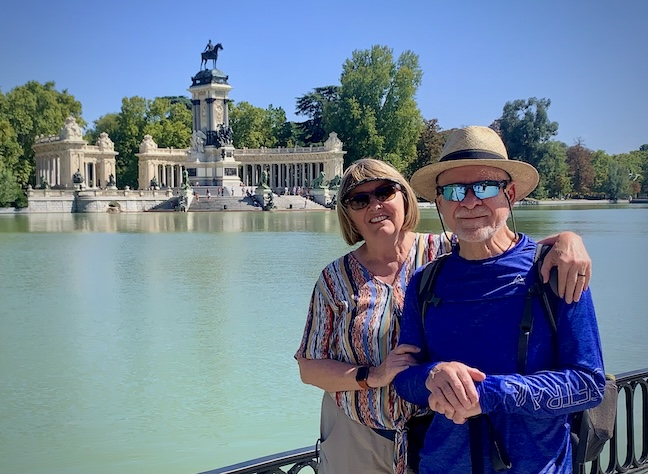
El Retiro Park was built in the middle of the 17th century for the monarchy and became public in 1868. The Monument to King Alfonso XII sits on an artificial lake where visitors can rent rowboats during the summer season. In 2021, the 350-acre park became a UNESCO World Heritage Site.
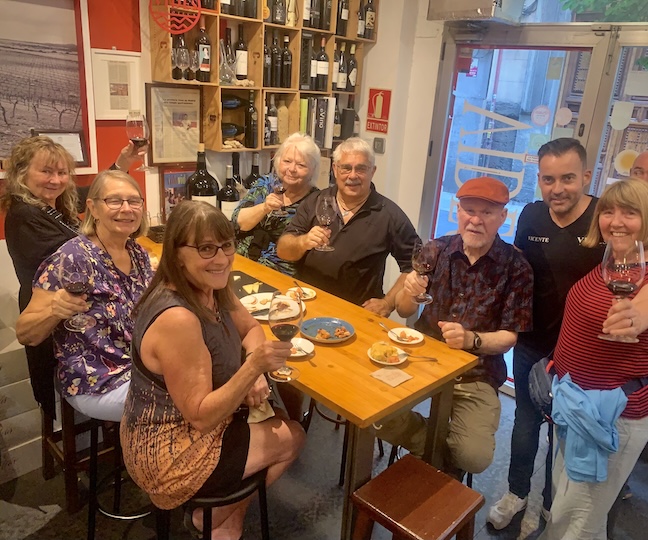
At 6:15 pm, our group was treated to a Spanish wine-tasting party with so many tapas we didn’t want dinner later. The owner of the small wine bar schooled us on regional wines and posed for pics.

While walking off the wine and tapas, we discovered the Museum of Ham. Spaniards are passionate about their “Jamon” or ham. Every business that sells food will have a cured haunch of cured ham on display in a vice for carving off razor-thin servings. Jamón ibérico de bellota made from free-range pigs fed acorns is considered Spain’s best.
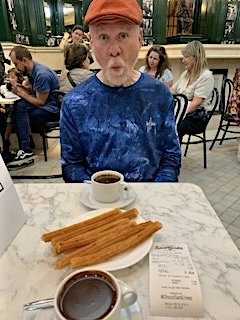
For a nightcap, we stopped at 130-year-old Chocolateria San Gines, stood in line, and ordered Madrid’s best churros and a cup of divine chocolate to dip them in.

